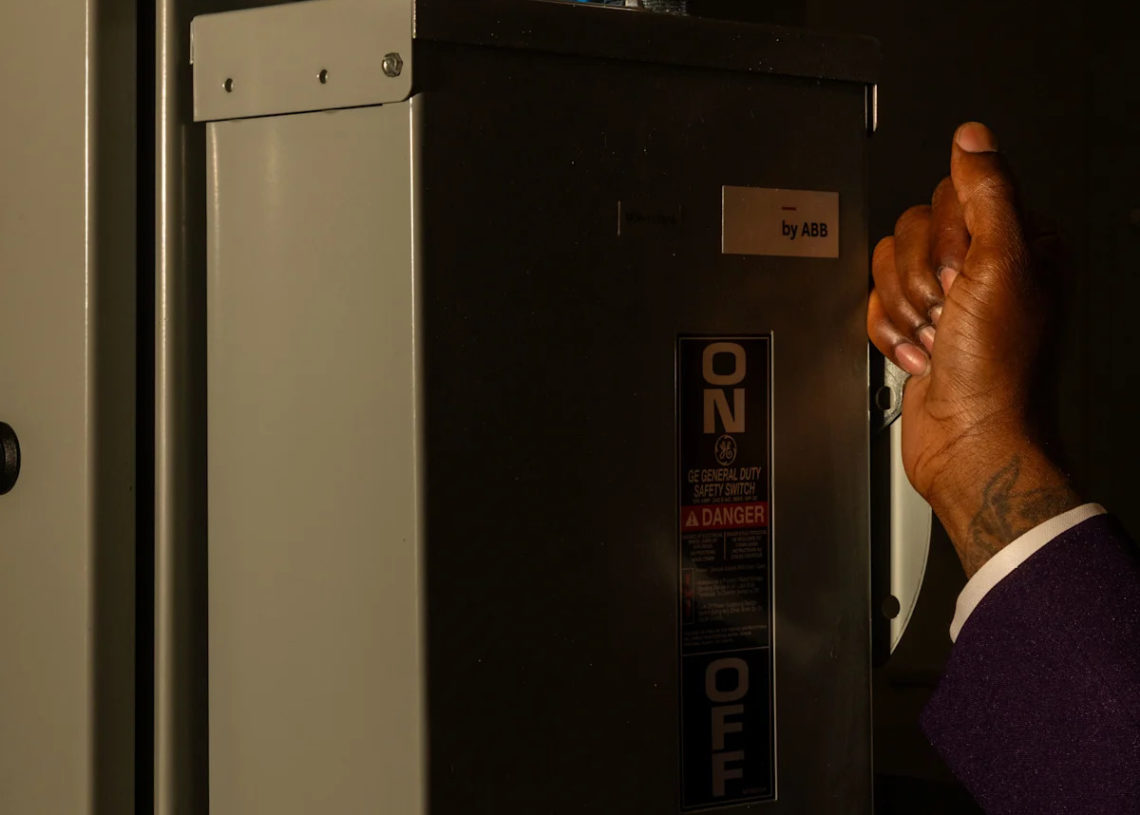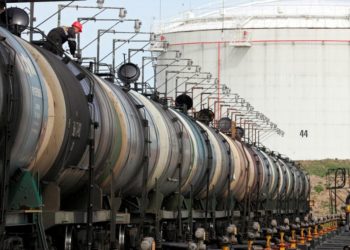Inside a white brick building in West Baltimore, a long silver chamber full of water seesawed back and forth over a platform.
Within it, a body dissolved. Skin, flesh and organs turned into amino acids and sugars with each tip of the chamber. In a matter of hours, all that remained were bones and the leftover watery solution.
This process, which is called alkaline hydrolysis, but is known more colloquially as water cremation, has been gaining popularity across the country since it was first used in the funeral industry in 2011, according to the Cremation Association of North America. More than half the states in the U.S. have legalized the process, according to the association. Maryland joined the list last spring. Soon after, the Joseph H. Brown Jr. Funeral Home started offering the service. The Maryland Health Department said Brown’s is the only funeral home it is aware of that offers the service in the state.
The water cremations take place inside a back room of Brown’s funeral home. The silver chamber sits beside a few large blue tubs filled with chemicals and a sequence of pipes snaking between the pieces of equipment. White printed labels with percentage signs and hazardous material markings cover the barrels of solution. The saline smell of a soapy chemical compound permeates the air as does the mechanical sound of steel scraping against itself in perfect intervals.
The area looks like a tiny, makeshift chemical plant.
But that’s not what Arnecia Edwards saw in her mind when she thought of the procedure.
She envisioned her father, John Edwards, who died at 88, gently laid into a pool at a spa and calmly rocking into the ether.
She thought of him returning to one of the places he loved the most, where he spent some of the sweetest moments of his youth – the waterfront.
She recalled him as a younger, healthier man, before a career on the railroad wore on his body, before the non-Hodgkin lymphoma invaded his white blood cells, the stroke tore through his brain and the diabetes through his body.
She saw him standing at the water’s edge at Patapsco Valley State Park soaking in the nature around him. She remembered him teaching her to swim. That’s part of what led her to choose water cremation.
“I think he would have loved it,” Edwards said.
Death care professionals say water cremation appeals to those who resonate with the idea of themselves or their loved ones departing the Earth through water.
“It’s just a gentler process,” said Lily Buerkle, a licensed mortician based in D.C.
It also attracts people looking for a greener alternative to fire cremation.
Maryland’s path to legalizing alkaline hydrolysis began, in part, when Adrian Gardner, a former lawyer for The Maryland-National Capital Park and Planning Commission, was grappling with his mother entering hospice about three years ago and started researching the death industry.
He learned about “green death,” a term for more environmentally-friendly methods of managing dead bodies, including alkaline hydrolysis and natural organic reduction, also known as human composting. That process involves enclosing the body in a capsule and heating it to speed up the body’s natural decomposition process. Once complete, the body becomes a mound of soil that the family can sprinkle in their yard, pot a plant with or donate for environmental restoration projects.
Gardner reached out to Buerkle, who was knowledgeable and outspoken about green death. They planned to open a funeral home together in Montgomery County offering both alkaline hydrolysis and natural organic reduction, but discovered neither was yet legal in Maryland, they said. They lobbied their lawmakers to change that. A bill legalizing alkaline hydrolysis and natural organic reduction passed in the Maryland legislature in 2024, and was signed into law by Gov. Wes Moore (D) that spring.
“We just want all the options on the table,” Buerkle said.
The next step was for the state to draw up regulations for both methods.
Joseph Brown didn’t want to wait that long.
The owner of the Joseph H. Brown Jr. Funeral Home had been eyeing alkaline hydrolysis for decades, and even redesigned his funeral home around the early 2000s with drains strategically placed in the facility for a future alkaline hydrolysis operation.
“I’m impatient,” Brown said. “I’m a businessman.”
Brown had faith that, over time, the industry would become a popular one in Maryland. The idea touches something within a grieving person, he explained. The use of water gives it more of a natural and spiritual feeling for some people than fire, he said.
“If you look at it biblically, we talk about our bodies as being earthen vessels. Earthen. Clay,” Brown said. “We wash away the clay, the vessel, and we give the family back the minerals, the calcium and phosphate.”
The gentle nature of the procedure can be particularly meaningful for those who’ve lost young ones, Buerkle added. It’s almost like returning them to the amniotic sack, the liquid-filled pouch that surrounds a fetus during pregnancy, she explained.
“Especially people who’ve lost children, especially babies, they think about, in the womb, they really only knew water,” Buerkle said.
But before Brown could start offering this service, there were logistical obstacles to consider. The resulting liquid from the process would need to go down the sewer. He met with the Baltimore’s Department of Public Works about how to manage the discharge.
Pat Boyle, a pollution control program administrator at the department, explained that a basic solution is used to dissolve the bodies. The solution is high on the pH scale, which means it could corrode the pipes. Brown would need to include an acidic additive into the solution to ensure the pipes would be protected.
Once the discharge made its way to through the pipes, the wastewater treatment plant would take care of the filtration and send it back out into the lakes and rivers.
The department gave Brown a permit, the legislature passed the law in 2024 and he got down to business, charging about $4,500 for each alkaline hydrolysis procedure.
Brown was aware the state hadn’t yet written regulations for alkaline hydrolysis, he said, and that put the process in a legal gray area.
Brown said he kept in contact with relevant state and local officials and felt pioneering a new industry in the state would be worth potential consequences from regulators.
“The first gets the oyster and the pearl and makes the decision as to what to do with the shell,” Brown said.
More than a year later, the regulations are still not finalized. Maryland’s Office of Cemetery Oversight held a public meeting in June to fine-tune the proposed regulations and is still reviewing them.
Brown estimates he’s done about 30 water cremations since he started offering alkaline hydrolysis in the summer of 2024.
For some, the concept of water cremation is so meaningful, they’ll send a loved one’s body across state lines to put them to rest.
When Janet Jackson, of the San Antonio area, lost her six-month-old grandson in February, she said her son couldn’t stomach the idea of lighting his baby’s tiny body on fire or putting it in the ground. Jackson had heard of water cremation and told her son about it.
“Grayson loved his bubble baths so much,” Jackson said. “Every night they would FaceTime me during bubble baths.”
Water cremation felt like the closest thing to sending Grayson off in a bubble bath, Jackson said. But it wasn’t legal in Texas. So they sent his body to Missouri where it was legal.
Thinking of Grayson leaving his life in water felt like a way to infuse some of his individuality into his death, Jackson said.
And she believes it’s what Grayson would have wanted too.
“I hear him telling me ‘thank you’ all the time,” she said.
Related Content
In Donbas, Ukrainians hold out as Russia besieges, bargains for their land
As more National Guard units arrive in D.C., local officials question the need
Ukraine scrambles to roll back Russian eastern advance as summit takes place
The post In Maryland, there’s now a greener way to handle dead bodies appeared first on Washington Post.




